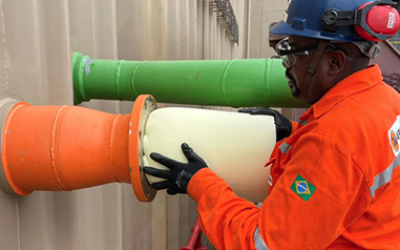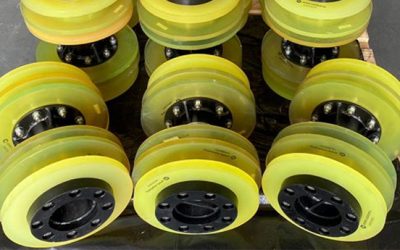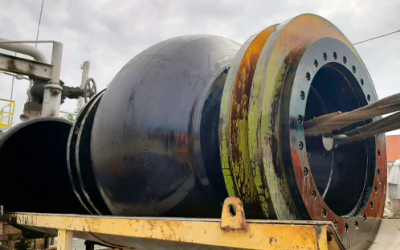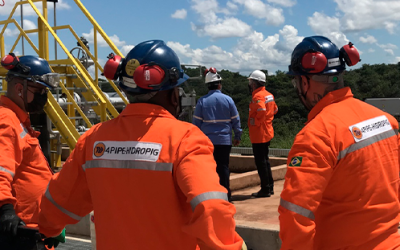Cleaning Pigs: Meet the smart solution to optimize costs and ensure quality in the delivery of your product and services.
A method that optimizes resources and recovers remaining products in the pipeline, in transport operations, after all, what is it and what are the advantages of the cleaning pig?
What is Cleaning Pig?
Also known as Pig pipe cleaning, this is a method that aims to clean piping systems of various substances, such as water, oil and gas.
This cleaning is carried out through an instrument called PIG, in which, during the process, the device runs through the entire internal length of the pipe directing all dirt, waste and debris out of the pipelines.
One of the main reasons why this method is so advantageous is that it can be applied to any type of pipeline, with internal coating or not, whether small or large (as it is the case of onshore pipelines), which frames it in an effective, fast and efficient cleaning method.
But it’s not just these benefits that a cleaning, using Pigs, can offer. Keep reading and discover more advantages!
What are the advantages of using Cleaning Pigs in The Pipeline?

Increased hydraulic capacity
It is no secret that the malfunction of pipes and pipelines can happen due to excess waste in these spaces, which means a distributed load loss. Even in more complex pipelines, it is not different. Therefore, Pig pipe cleaning can resume and recover the hydraulic capacity of the project, since the cleaning increases the flow of the distribution system, decreasing the cost of electrical energy and ensuring the quality of the final product.
Higher durability of your product or service
The constant cleaning of the pipeline favors better distribution in various segments of the industry.
With the use of Pig, for example, companies will consequently have their downtime for maintenance significantly reduced since, if cleaning is performed effectively, the chances of a new correction decrease.
Therefore, in addition to optimizing time and reducing energy consumption, the integrity, of whatever product that runs through the pipeline, remains guaranteed.
Fast and effective result
As mentioned above, the use of Cleaning Pigs provides a dynamic and equally safe result, since the device is made from a highly flexible material and ensures that your path during cleaning is done without causing damage to the pipeline.
Speaking a little bit about the strength of pigs, it is important to note that these are produced with materials such as polyurethane, which can be high, medium and low density. This means that, in addition to having excellent durability, this cleaning process still has a low complexity: All the Pig needs is an entry point (to start cleaning) and an exit point (to remove the waste).
How is this process done?
To better understand the importance of this process, 4Pipe has separated a case to exemplify and prove excellence in our services.
Understanding customer needs
The request came from a customer who operates in the area of transportation and movement of Hydrocarbons in Porto do Itaqui, State of Maranhão. He needed to perform technical services using “Pigs” in parts of “onshore” pipelines, which will go into operation and transport LPG – Liquefied Petroleum Gas.
For this project, our engineering and operations team met the good engineering practices and applicable standards, among them, the guidelines based on the ABNT NBR 15280-2 Ground Pipelines Part 2: Construction and Assembly.
Performing the service
We understood that it is essential that the newly constructed pipelines are commissioned, in such a way that inside of it there is no debris, particulates, foreign materials, baldness and geometric deformations remaining from the assembly stage and that may compromise the safety, operability and integrity of the asset. To do this, we performed the steps below, meeting all the necessary requirements:
- Mechanical cleaning: Purpose of removing debris, sand, stone, mud, particulates and foreign materials that may be inside of the pipelines, coming from the construction and assembly phase;
- Magnetic cleaning: Purpose of removing ferrous debris, where the magnets installed in the body of pigs promoted, by magnetic action, the removal of ferrous debris;
- Filing: Purpose of filling the line with water, removing any and all air pockets, for the HT step – Hydrostatic Test;
- Calibration: Purpose of detecting any geometric anomaly that may exist inside the pipeline, such as squealing and or ovaling above the permitted, such detection is made through the calibrator plate installed in the Pig body;
- Emptying: Purpose of removing remaining water from the HT step – Hydrostatic test and/or in some cases, remaining water from cleaning;
- Drying: Drying purpose for total removal of water absorbed by the pipeline wall.
4Pipe Hidropig – providing solutions for our customers.
Talk to our team!
Conclusion
Pig pipe cleaning is a dynamic and efficient method that aims to sanitize pipelines systems to remove debris that may compromise the proper functioning of the pipes.
This cleaning method can be applied to small, medium and large pipelines, since the projectile that runs through the pipeline is highly flexible and simple to use.
4pipe continues to provide solutions for optimizing time and quality to the customers in their products, so, in this post, you have known a little bit more about one of our services and how it can be advantageous to ensure effective cleaning.
Want to know more? Visit our blog and check out our services!





